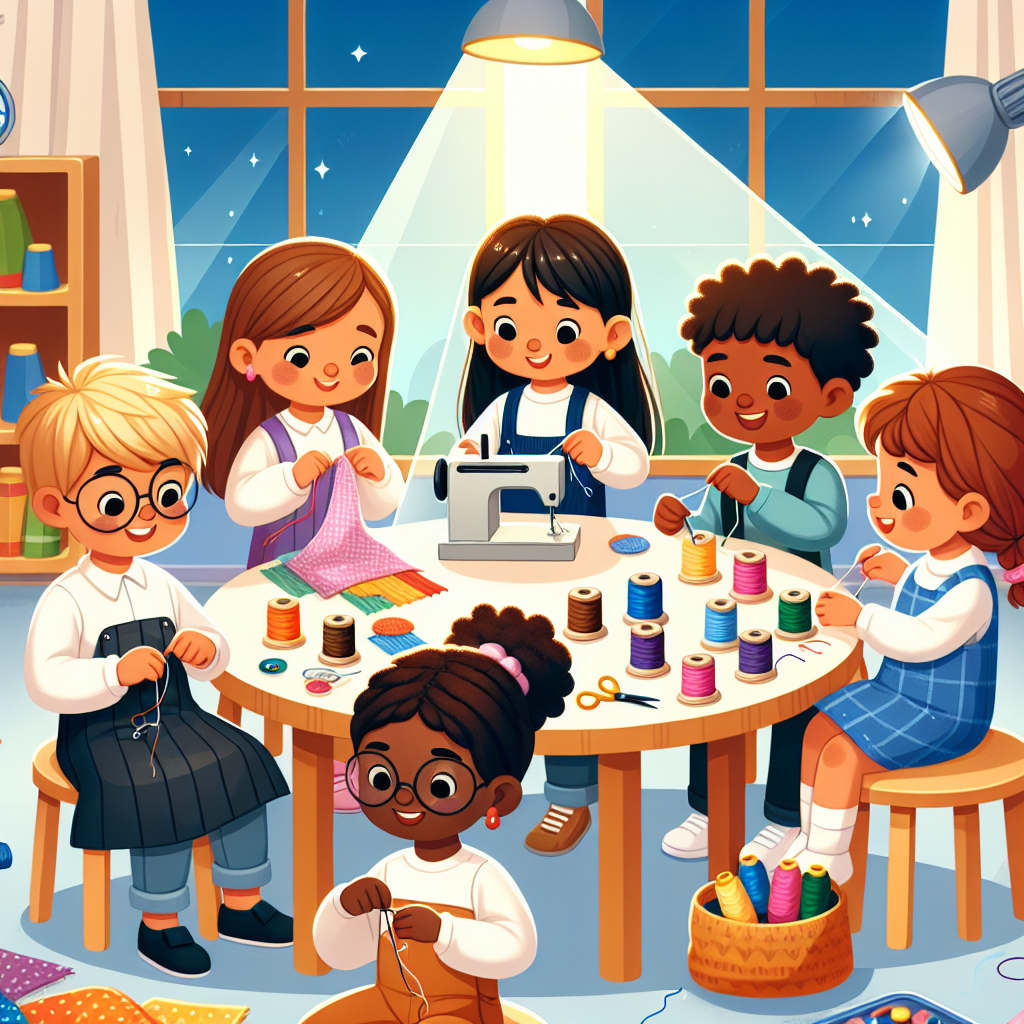Key Takeaways
- Discover the age range to start teaching sewing to kids for optimal engagement and skill development.
- Learn about age-appropriate sewing projects that can ignite a child’s creativity and build foundational skills.
- Understand the importance of advancing sewing techniques as children grow and their capabilities evolve.
- Explore the benefits of sewing as a lifelong skill that promotes independence and confidence in tweens and teens.

Embarking on the journey of teaching sewing to children can be as rewarding as it is fun. Sewing not only hones fine motor skills but also fosters creativity and gives kids a sense of accomplishment. The question is, when is the right time to start?
The Ideal Age to Introduce Sewing to Kids
Introducing sewing to children can begin as soon as they express interest and can handle simple tasks. Each child is different so it totally depends on the child. However as a guideline, interest may start to spark around the ages of 5 to 7. At this stage, children are developing the dexterity and patience needed for sewing, making it the perfect time to introduce them to the basics.
Early Years: Simple Stitches and Projects
For the little ones, start with the basics. Introduce them to the concept of threading a needle and tying a knot. Begin with large, plastic needles and brightly colored yarn to capture their attention. Safety and supervision is paramount, so ensure all materials are child-friendly.
- Use felt or other sturdy fabrics that are easy for small hands to handle.
- Start with simple projects like a basic hand puppet or a small pillow, which provide instant gratification.
- Show them how to do a running stitch, which is one of the simplest stitches to learn.
- Turn sewing into a game – who can sew the straightest line or the neatest stitch?
- Always supervise closely to prevent any mishaps and to keep the experience positive.
Remember, the goal at this stage is to make sewing enjoyable and to instill a sense of achievement in their creations.
Middle Childhood: Advancing Sewing Skills
As children grow, so should their sewing projects. Around the ages of 8 to 10, some kids are ready for more challenging tasks. They can handle smaller needles and finer threads, and their increased attention span allows for more intricate designs.
- Introduce patterns and allow them to cut fabric under supervision.

- You can introduce them to more basic stitches like the running stitch, blanket stitch and more to expand their skills.
- Encourage them to complete projects that require more steps, such as a simple bag or a stuffed animal or our Fashion Designer Kit
- Focus on projects that they can use or gift, giving their work purpose and value.
- Emphasize the importance of patience and perseverance as projects become more complex.
This is the stage where children can start to see the practical applications of their sewing skills, which is a great motivator.
- Start with a basic sewing machine and simple projects to build confidence.
- Teach them about patterns, marking and usage, different fabrics and how to choose the right material for their projects.
- Encourage them to plan and execute their sewing projects from start to finish.
- Let them personalize their creations with decorations like buttons, beads, or embroidery.
- Guide them in fixing mistakes, understanding that errors are part of the learning process.
At this age, sewing can become a form of self-expression and a way for tweens to showcase their individuality through their creations. It’s all about keeping it fun and enjoyable.


